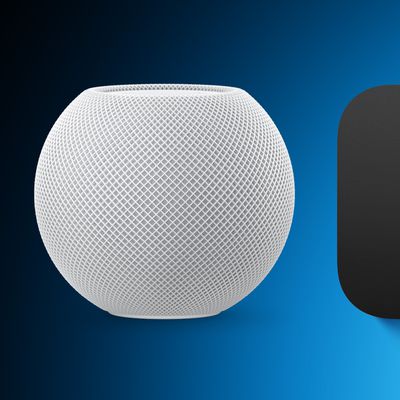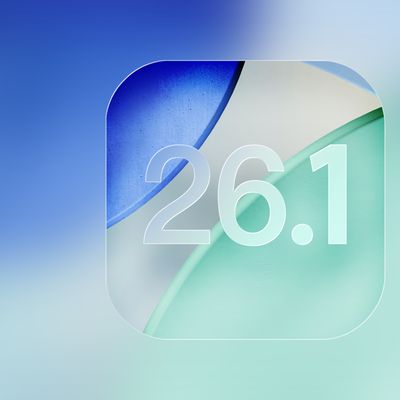Volvo was one of the early adopters of CarPlay, debuting it in the U.S. with the 2016 XC90, and also leading the charge in showing Apple Maps on a secondary screen in the driver's instrument display, but the company has been surprisingly slow to expand beyond wired connections and support wireless CarPlay.

That's changing with some of Volvo's new electric models, with the EX30 and EX90 supporting it in the United States and the ES90 supporting it in China and select European markets. The EX30 and EX90 also support digital car keys that integrate with Apple's Wallet app, and I recently had a chance to spend some time with a 2025 EX90 to check out Volvo's implementation of these features.

When it comes to wireless CarPlay, it largely performs as you'd expect given the technology has been around for a number of years now and is available in many models across dozens of brands. But Volvo does deliver some nice features including that dual-screen Apple Maps experience it has offered for a couple of years in wired mode and which remains a fairly rare offering across manufacturers.
The EX90 features a large 14.5-inch center display in portrait orientation, plus a 9-inch digital driver display, and my higher-end trim was also equipped with a head-up display, offering plenty of screen space to show an array of information at a glance.
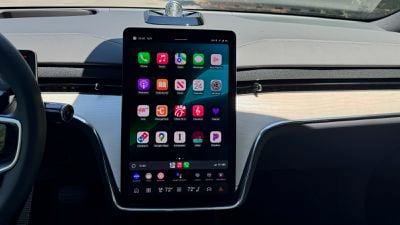
With that large portrait display in the center of the dashboard, CarPlay is able to take over the vast majority of it for an expansive user experience, starting with the ability to display up to 20 apps on the CarPlay Home Screen in four rows of five icons. And when you tap into individual apps, you'll see bold, large interfaces that make content easy to see and controls simple to interact with. Navigation apps like Apple Maps are able to show large map views that provide lots of context for your surroundings, while the Now Playing app can display huge artwork for music and podcast content.
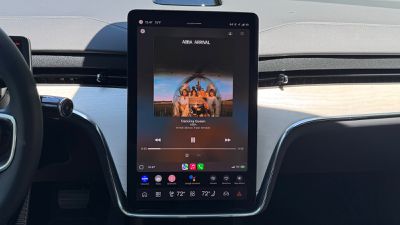
The 9-inch driver display certainly isn't huge, and it stands out as its own compact component, a design that is common in recent EVs where simplicity has become major theme. But as mentioned, that driver display is still capable of serving as handy secondary display for Apple Maps in CarPlay. When turn-by-turn navigation for Apple Maps is active, you'll see a fairly similar view to what you'd normally see on the main center screen in CarPlay, with a zoomed view of the route immediately ahead of you, including upcoming traffic control features like stop signs and traffic lights.

The instruction for your next movement along the route is displayed at the upper right, while the bottom of the map features a small text display showing your estimated arrival time, estimated time remaining on the route, and the distance remaining. Pieces of traditional driver display information like your speed and remaining battery level/range are sprinkled around the edges of the map and overlap a bit, providing a very native-looking integration.
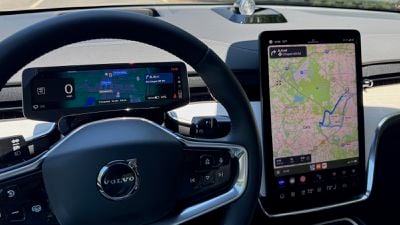
With the detailed near-term turn-by-turn information showing in the driver display, the main center screen is able to show a zoomed-out view of your entire route, though you'll also be able to see turn-by-turn instructions and other route data on that screen. If you switch the driver display view to something other than Apple Maps while a route is active, the center screen will switch back to a more traditional view where it focuses on your upcoming movements rather than your route overview.
The available head-up display on the EX90 can also show turn-by-turn prompts from Apple Maps, giving you potentially three places to look to stay on top of your routing.

Notably, Volvo has been a close partner with Google for its infotainment systems in recent years, and the EX90's system is based on Google built-in, which means it comes with Google Maps as the default navigation app, which can also take advantage of the driver display. For voice control and general queries, the platform offers access to Google Assistant, though you can also easily access Siri when you're connected using CarPlay.

Users can also access the Google Play Store to download compatible apps, and there's even a built-in YouTube app for watching content on that big center screen when the vehicle is not in motion, something Apple is looking to compete with in iOS 26 with new AirPlay support, though that will require car manufacturer partnerships, presumably to allow CarPlay to tap into data on whether or not the vehicle is in motion.

The EX90 and EX30 also support Volvo's Digital Key Plus, which is configured through the Volvo app and which integrates with the Wallet apps on both Apple and Android platforms. For Apple users, a digital key card for the EX90 appears in your Wallet app on the iPhone and Apple Watch, and with Express Mode it uses proximity authorization to allow you to unlock and start the car without needing to physically touch your device to the door handle or a pad inside the vehicle and without having to authorize on your device.

The car can even unlock as you get within five feet or so of it, eliminating the need to pause at all before opening the door and sliding into the driver's seat. That feature can, however, be a bit of a mixed bag if you frequently walk past your vehicle in a driveway, for example, and find it unlocking when you don't need it to, so you may want to disable automatic unlocking if you find yourself in that situation.
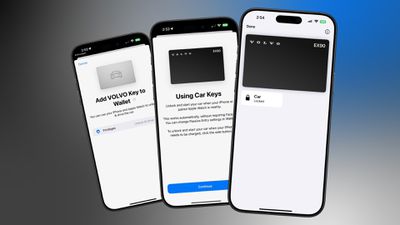
The EX90 includes a wireless phone charger plus a number of USB-C charging ports scattered about the cabin. As is frequently the case, I found performance of the wireless phone charger to be spotty, with it often barely being able to maintain the current phone battery level or perhaps very slowly increase it.

Volvo has received some criticism for the stability of its latest infotainment system, with a number of users reporting sluggishness, connectivity issues, and unresponsiveness, as well as problems with digital keys. Fortunately, I did not experience any such issues during my time with the EX90, but that doesn't discount the experiences of those who have had problems. Volvo has been working through some of the issues and has been steadily releasing software updates for the system, so hopefully some of the bugs are being addressed.
The EX90 doesn't come cheap, starting at a little over $80,000 with my test vehicle coming in at nearly $95,000 with all of the bells and whistles and fees. The EX30 offers much of the same experience at a cheaper price in a smaller vehicle, however, with pricing starting at around $40,000.




